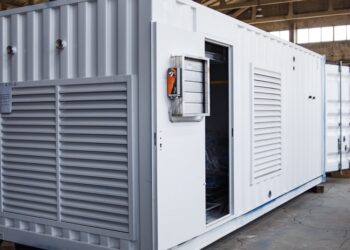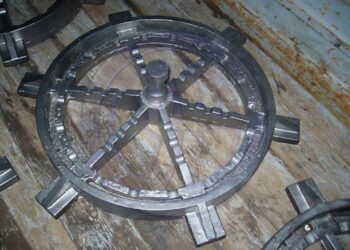Owning a boat isn’t just about hitting the water — it’s about keeping it performing like new every season. Maintenance separates seasoned owners from the ones constantly paying for repairs.
Whether you run a fishing boat, cruiser, or pontoon, following a professional-grade upkeep routine saves time, money, and frustration. One small but critical piece of hardware often overlooked in maintenance is Anchor Swivels — they prevent line twists, reduce wear, and improve anchoring safety. Here’s the full 2025 boat maintenance checklist that keeps your vessel in top condition.
Why Regular Maintenance Matters
Neglect kills boats faster than waves ever could. Salt, sun, and constant vibration eat through materials if left unchecked. Staying on top of maintenance protects your hull, hardware, and systems. Plus, it keeps resale value high.
A well-maintained boat runs smoother, anchors securely, and looks sharp. And yes — even small components like Anchor Swivels can make the difference between a calm day at anchor and a tangled nightmare.
Weekly Maintenance Tasks
These are quick, easy jobs that prevent bigger problems later.
- Rinse after every trip: Use fresh water to remove salt and grime from hulls, decks, and fittings.
- Inspect lines and ropes: Check for fraying or stiffness. Replace anything that feels brittle.
- Check anchor system: Ensure your Anchor Swivels move freely without corrosion. A frozen swivel causes chain twist and stress on your windlass.
- Wipe down seats and vinyl: Salt, sunscreen, and UV break down materials fast. Use marine-safe cleaners.
- Flush engines: Run freshwater through your outboard or inboard cooling system to remove salt buildup.
Consistency here keeps the big issues away.
Monthly Maintenance
Every few weeks, dive a little deeper.
- Inspect the hull: Look for chips, cracks, or blistering. Fix immediately to prevent water intrusion.
- Polish and wax: A clean, waxed surface resists UV and algae growth.
- Check propellers: Remove dings and debris. Bent props affect performance and fuel economy.
- Battery health: Clean terminals, test voltage, and keep them charged.
- Anchor chain and swivel inspection: Check that your Anchor Swivels rotate 360° smoothly. Replace if rust or stiffness appears — these small parts protect your entire anchoring system.
Seasonal Maintenance Checklist
Do this at least twice a year — before and after your peak boating season.
Engine and Fuel System
- Change oil and filters.
- Replace fuel filters and water separators.
- Inspect belts, hoses, and clamps for cracks or leaks.
- Treat your fuel with stabilizer if the boat will sit unused.
Electrical System
- Check all navigation lights, pumps, and electronics.
- Inspect wiring for corrosion, especially near connectors.
- Test your bilge pump — it’s your first line of defense against leaks.
Steering and Controls
- Lubricate control cables and linkages.
- Check hydraulic steering fluid and top off if needed.
Hull and Deck
- Clean scuppers and drains.
- Tighten all deck fittings, cleats, and rails.
- Inspect and lubricate Anchor Swivels and shackles. They must move freely under load to prevent twisting or chain damage.
Trailer (if applicable)
- Grease wheel bearings.
- Inspect tires for dry rot.
- Test trailer lights and wiring.
Annual Deep Service
Once a year, go all in. It’s worth the effort.
- Pull the boat out of the water for full hull inspection.
- Sand and repaint the bottom if antifouling is needed.
- Replace zinc anodes to prevent corrosion.
- Pressure test fuel lines and tanks.
- Replace spark plugs and impellers.
- Remove, clean, and re-grease all Anchor Swivels and shackles — especially if used frequently in saltwater.
Annual servicing is where most hidden issues are found and fixed before they cost you real money.
Pro Tips for Extending Boat Life
- Stay organized: Keep a maintenance log. Record dates, services, and replacements.
- Use marine-grade products: Never cheap out on lubricants, sealants, or cleaners.
- Cover your boat: UV and rain cause massive damage over time.
- Inspect hardware regularly: Stainless fittings, Anchor Swivels, and cleats should always be rust-free.
- Store properly: If you winterize, drain all systems completely to prevent freezing damage.
Why Anchor Swivels Deserve Special Attention
Your anchor system is under constant strain. Without proper rotation, anchor chains twist, weaken, and can even snap under load. Anchor Swivels allow the anchor to align naturally with the chain, preventing torsion and reducing wear on windlasses.
Key Benefits of Anchor Swivels
- Smooth 360° rotation under heavy load.
- Corrosion-resistant stainless steel for saltwater durability.
- Prevents chain twist, reducing mechanical stress.
- Safer retrieval, avoiding tangles and snags.
High-quality Anchor Swivels aren’t optional — they’re a must-have for anyone who anchors frequently.
Common Maintenance Mistakes
- Ignoring minor rust: Small spots spread quickly on marine metals.
- Skipping lubrication: Dry parts corrode faster and seize under pressure.
- Using freshwater-only cleaners on salt buildup: Always use marine-safe solutions.
- Neglecting anchor gear: A failed swivel or shackle can put your whole boat at risk.
The Modern 2025 Approach to Maintenance
Technology is simplifying upkeep. Apps now track maintenance schedules, service intervals, and even alert you when components like Anchor Swivels reach load limits or show performance issues. Smart sensors monitor bilge levels, battery health, and engine diagnostics in real time — all from your phone.
Still, no app replaces hands-on inspection. Boats live and breathe through constant contact with water and weather. The owner who inspects, cleans, and tightens every detail always wins.
Final Thoughts
Boat maintenance isn’t glamorous, but it’s what separates dependable owners from the ones stranded at the dock. Follow a disciplined schedule — weekly, monthly, seasonal, and annual — and treat your hardware with the respect it deserves.
Reliable components like Anchor Swivels ensure safety, prevent wear, and keep your anchor system working flawlessly. Combine that attention to detail with consistent cleaning and inspection, and your boat won’t just last longer — it’ll perform better every single trip.












